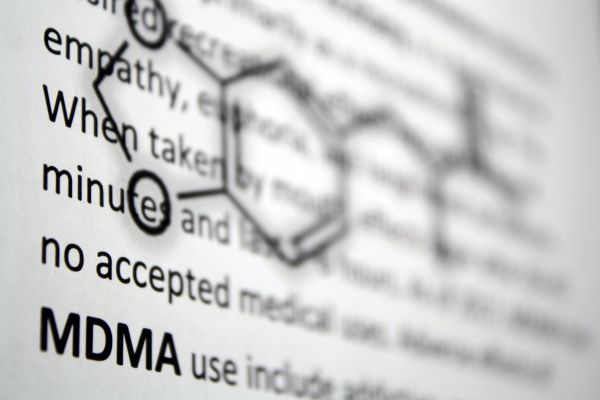Alcohol monitoring bracelets are an increasingly common punishment for DUI arrests as an alternative to jail time. These wearable alcohol detectors can identify even just teensy amounts of alcohol in the body. Here’s a complete guide to how they work, the consequences of drinking alcohol while court-ordered to wear one, and how much trouble you could get into if you tampered with one.
What is an alcohol monitoring bracelet?
Alcohol monitoring bracelets are wearables that measure a person’s alcohol consumption. They’re often court-ordered to individuals who have been arrested on DUI charges, though they can be worn voluntarily by someone looking for increased accountability to help them maintain their sobriety. Most court-ordered bracelets are issued to be worn for 90 consecutive days.
These monitoring bracelets measure alcohol blood concentration through contact with the wearer’s skin — or, more precisely, the wearer’s sweat. Some alcohol monitors are worn on the wrist, while the majority, like the popular SCRAM alcohol monitor, are ankle monitors worn just above the foot. In either style, alcohol monitoring bracelets are meant to be unobtrusive and allow for all normal activities like exercising and swimming.
How do alcohol monitoring bracelets work?
Alcohol monitor bracelets are semi-permanent wearables that a court-ordered individual can only remove with the court’s permission. Unlike the older breathalyzer tests, these bracelets check a person’s insensible perspiration, which is on the skin at all times, whether we feel sweaty or not.
The automatic tests look for alcohol metabolites, the leftover traces of alcohol that are excreted through the skin and are extremely sensitive. The SCRAM alcohol monitor can detect a blood alcohol concentration of as low as 0.02%.
Wearable alcohol monitors typically test every 30 minutes, 24 hours a day. There’s no sound to indicate that a test is occurring, though some may make a light buzzing noise. These test results are then sent to a monitoring center via GPS signal. There, trained professionals analyze the transmitted data for evidence of alcohol consumption. If no alcohol is detected, nothing happens. If alcohol is detected in your sweat while wearing an alcohol monitor.
What happens when SCRAM detects alcohol?
When alcohol is detected in an alcohol monitor, the monitoring personnel can locate the precise location and then alert the local authorities. The consequences can vary and are up to the judge’s discretion. These can include:
- Altered bond terms
- Fines
- Probation or parole
- Revoke the person’s bond and send them to jail
- Revoked driving privileges
- Required counseling and community service initiatives
However, alcohol isn’t all that court-issued alcohol monitors monitor. Those 30-minute tests also check for tampering. Any of the below acts can result in similar consequences as violating the court order and consuming alcohol.
- Breaking the device
- Interfering with body temperature to prevent sweating
- Putting a barrier between the monitor and the skin
Avoiding false positives
As mentioned earlier, modern alcohol monitors are highly sensitive, which can leave some people concerned about everyday products like perfume, mouthwash, hand sanitizer, lotion, and hairspray which contain alcohol.
The good news is that it’s very unlikely that any personal hygiene products would be enough to generate an alert just by using them. However, using them near your monitor or in high quantities could generate a false positive. For this reason, alcohol monitoring bracelets typically require users to agree to avoid these products to be on the safe side.
Similarly, spilling alcohol directly on your monitor would certainly be captured by your device. However, the device is sophisticated enough to detect a rapid spike in alcohol content and attribute it to something external rather than alcohol consumption.
Is there such a thing as secondhand alcohol exposure?
Kissing or other intimate acts with someone who has been consuming alcohol won’t trigger an alarm on your monitor. The monitor can distinguish between ingested alcohol and exposure to something — or someone — containing alcohol.
How far back can a SCRAM bracelet detect alcohol?
Unlike drugs such as marijuana, cocaine, or methamphetamine, which leave long-lasting traces of their substances in the body (think: saliva, hair, urine), alcohol does not leave any lasting trace. So, if you have alcohol in your system even an hour before having an alcohol detection bracelet installed, you likely won’t have to worry about immediately setting off your monitor.
What can I do if I don’t want to wear an alcohol monitor bracelet?
If you’ve been court ordered to wear an alcohol monitor, sorry, you don’t have much choice. Something you do have control over is whether you view this monitor as a burden or an opportunity to get sober. If you’re struggling to abstain from alcohol, visit a local Alcoholics Anonymous group to get practical tips and advice from others who have been in your shoes.
What is an alcohol monitoring bracelet?
Alcohol monitoring bracelets are wearables that measure a person’s alcohol consumption. They’re often court-ordered to individuals who have been arrested on DUI charges, though they can be worn voluntarily by someone looking for increased accountability to help them maintain their sobriety. Most court-ordered bracelets are issued to be worn for 90 consecutive days.
These monitoring bracelets measure alcohol blood concentration through contact with the wearer’s skin — or, more precisely, the wearer’s sweat. Some alcohol monitors are worn on the wrist, while the majority, like the popular SCRAM alcohol monitor, are ankle monitors worn just above the foot. In either style, alcohol monitoring bracelets are meant to be unobtrusive and allow for all normal activities like exercising and swimming.
How do alcohol monitoring bracelets work?
Alcohol monitor bracelets are semi-permanent wearables that a court-ordered individual can only remove with the court’s permission. Unlike the older breathalyzer tests, these bracelets check a person’s insensible perspiration, which is on the skin at all times, whether we feel sweaty or not.
The automatic tests look for alcohol metabolites, the leftover traces of alcohol that are excreted through the skin and are extremely sensitive. The SCRAM alcohol monitor can detect a blood alcohol concentration of as low as 0.02%.
Wearable alcohol monitors typically test every 30 minutes, 24 hours a day. There’s no sound to indicate that a test is occurring, though some may make a light buzzing noise. These test results are then sent to a monitoring center via GPS signal. There, trained professionals analyze the transmitted data for evidence of alcohol consumption. If no alcohol is detected, nothing happens. If alcohol is detected in your sweat while wearing an alcohol monitor.
What happens when SCRAM detects alcohol?
When alcohol is detected in an alcohol monitor, the monitoring personnel can locate the precise location and then alert the local authorities. The consequences can vary and are up to the judge’s discretion. These can include:
- Altered bond terms
- Fines
- Probation or parole
- Revoke the person’s bond and send them to jail
- Revoked driving privileges
- Required counseling and community service initiatives
However, alcohol isn’t all that court-issued alcohol monitors monitor. Those 30-minute tests also check for tampering. Any of the below acts can result in similar consequences as violating the court order and consuming alcohol.
- Breaking the device
- Interfering with body temperature to prevent sweating
- Putting a barrier between the monitor and the skin
Avoiding false positives
As mentioned earlier, modern alcohol monitors are highly sensitive, which can leave some people concerned about everyday products like perfume, mouthwash, hand sanitizer, lotion, and hairspray which contain alcohol.
The good news is that it’s very unlikely that any personal hygiene products would be enough to generate an alert just by using them. However, using them near your monitor or in high quantities could generate a false positive. For this reason, alcohol monitoring bracelets typically require users to agree to avoid these products to be on the safe side.
Similarly, spilling alcohol directly on your monitor would certainly be captured by your device. However, the device is sophisticated enough to detect a rapid spike in alcohol content and attribute it to something external rather than alcohol consumption.
Is there such a thing as secondhand alcohol exposure?
Kissing or other intimate acts with someone who has been consuming alcohol won’t trigger an alarm on your monitor. The monitor can distinguish between ingested alcohol and exposure to something — or someone — containing alcohol.
How far back can a SCRAM bracelet detect alcohol?
Unlike drugs such as marijuana, cocaine, or methamphetamine, which leave long-lasting traces of their substances in the body (think: saliva, hair, urine), alcohol does not leave any lasting trace. So, if you have alcohol in your system even an hour before having an alcohol detection bracelet installed, you likely won’t have to worry about immediately setting off your monitor.
What can I do if I don’t want to wear an alcohol monitor bracelet?
If you’ve been court ordered to wear an alcohol monitor, sorry, you don’t have much choice. Something you do have control over is whether you view this monitor as a burden or an opportunity to get sober. If you’re struggling to abstain from alcohol, visit a local Alcoholics Anonymous group to get practical tips and advice from others who have been in your shoes.









